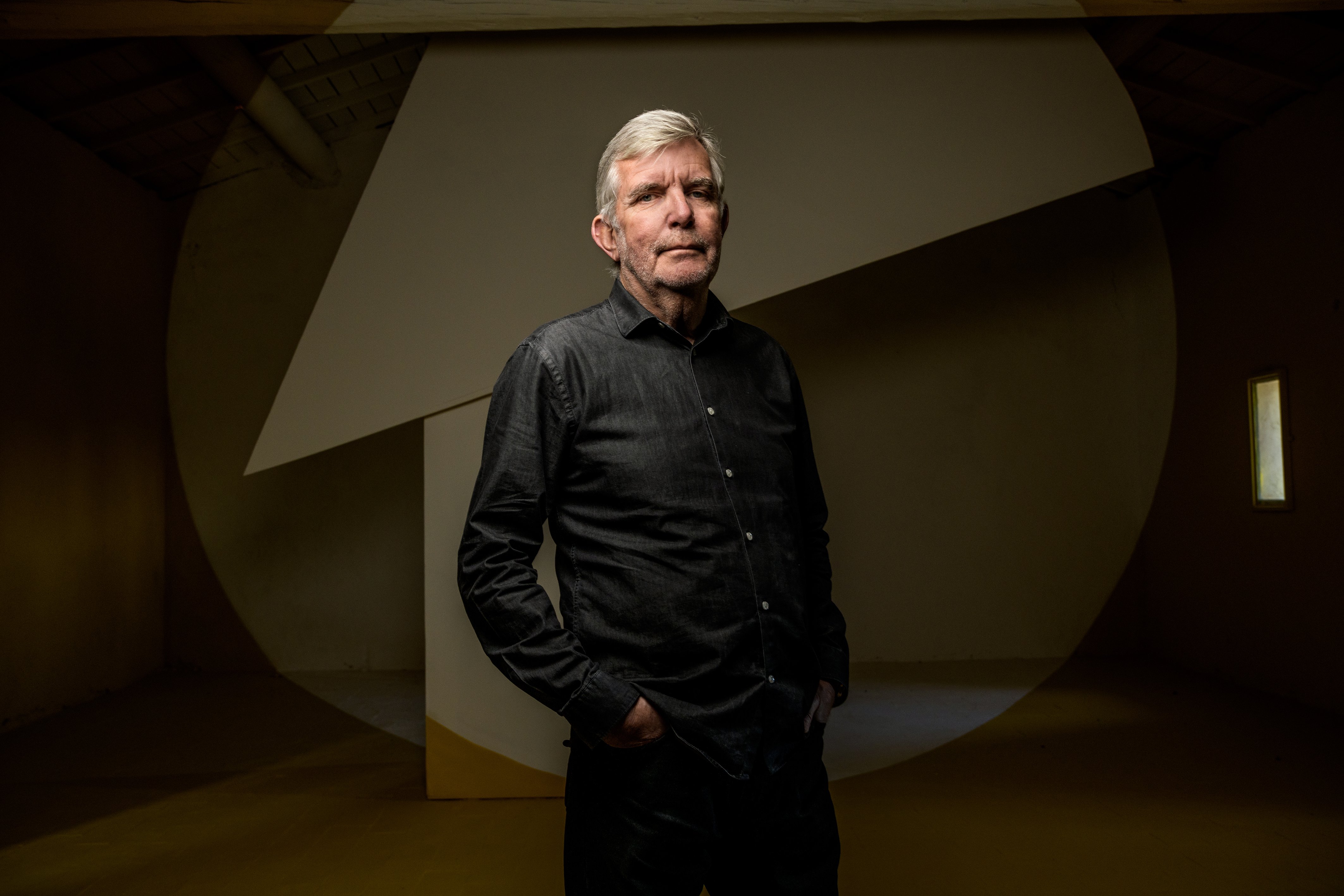
Christian Le Dorze, the French healthcare executive and physician, has an unlikely trio of expertise: medicine, wine, and art. His love of contemporary art began in the early 1980s when he came to know Xavier Douroux and Franck Gautherot, the founders of the celebrated museum in Dijon, France, the Consortium. Today he focuses on collecting contemplative works that span genres of abstract art, concrete art, and kinetic art.
“I have always believed that being a collector should not be limited to selfish pleasure but should contribute to the vitality of contemporary creation,” he told Artnet News.
When he is not in Switzerland, at his primary residence in Crans-Montana, the physician spends much of his time at his second home, his family’s vineyard in Aix-en-Provence, which is known as the Château Bonisson. It is here where, over the past three years, he has meticulously re-dedicated much of the estate to contemporary art.
Le Dorze opened the Bonisson Art Center in a part of the winery the public last winter with an exhibition by celebrated photographer George Rousse. This summer will be an exhibition of works by the late French artist Bernard Aubertin, who was a figure in the Zero movement.
With the Bonisson Art Center, Le Dorze hopes to create a residency and a scholarship, which he hopes to get off the ground in 2022. “The space should respond to the most diverse audiences and facilitate access for school children and students,” he said, adding that collectors’ spaces can be especially well positioned for this task: “The absence of commercial constraints and issues, administrative or political interventions are the guarantee of its autonomy.”
Bonisson Art Center’s exhibition of Georges Rousse. Courtesy Bonisson Art Center.
What was your first purchase?
I wanted to discover and understand contemporary art before I started collecting it. It took me a few necessary and indispensable years to gain a consistency in my acquisitions. I made my first purchase in 1988, which was a painting by Yan Pei-Ming called Tête 4# made that same year—it was on view at the artist’s first exhibition in Sète, France. I also had the good fortune of meeting him and we became close friends.
What was your most recent purchase?
I recently acquired a large-scale outdoor abstract sculpture by Swiss artist Gottfried Honegger, which will be placed in front of a future winery that we are in the process of building.
Which works are you hoping to add to your collection this year?
I wish I could acquire an outdoor sculpture by French artist Bernar Venet. I love the quality of his creations. I had the opportunity to discuss his approach with him recently, and I am pleased that I will be able to present his work at the Bonisson Art Center.
Since I opened the art center, I have more and more contact with young artists and I also wish to support them and these most contemporary creations. I think some of them will certainly feed my collection.
Yan Pei Ming’s Portrait of Mao (1991). Courtesy Christian Le Dorze.
What is the most expensive work of art you own?
I do not appreciate the works in my collection for their market value but rather for the personal emotional satisfaction they continue to bring me, as well as the desire I now have to share my passion with a wider audience. However, I have been fortunate enough to acquire works for more than 30 years and some of the artists have seen their ratings rise.
Where do you buy art most frequently?
Most often directly with the artists, especially with young artists, through my meetings with them and the discovery of their studios. I also buy from a few galleries that present work that is consistent with my collection and, more rarely, from auction houses.
Is there an artwork you regret purchasing?
No. No regrets in art as in general. I think and take my time to acquire an artwork. I want to be sure that the pleasure of contemplating it will be lasting.
François Morellet’s strip-teasing (2005). Courtesy Christian Le Dorze.
What work do you have hanging above your sofa? What about in your bathroom?
I regularly change the works that are presented in the places and rooms where I live. The temporary nature of the presence of the works in a specific place is one of the pleasures for me to have a collection.
Currently I have François Morellet’s strip-teasing from 2005, Bernard Aubertin’s 1959 red monochrome, and Yan Pei-Ming’s 1991 Portrait of Mao in my living room. There are prints in my bathroom, including Victor Vasarely’s Euclide from 1984 and Aurelie Nemours’s Espace bleu from 1959.
What is the most impractical work of art you own?
I don’t really own any impractical art because I only buy works that I can find and show where I live. I prefer to buy works that will allow me to change their location with a temporary presence.
What work do you wish you had bought when you had the chance?
Without owning a work, I can still admire it in a museum or a gallery. But it could be, for example, a work by Agnes Martin or Gerhard Richter, but I do not have the money to achieve that.
If you could steal one work of art without getting caught, what would it be?
I don’t even think about it! If I were allowed to do that, it would probably be a painting by Caravaggio, for example The Martyrdom of St Matthew in the church of Saint Louis of the French in Rome. I am always in awe of the power of this work, its realism, and the perfection of the chiaroscuro technique.